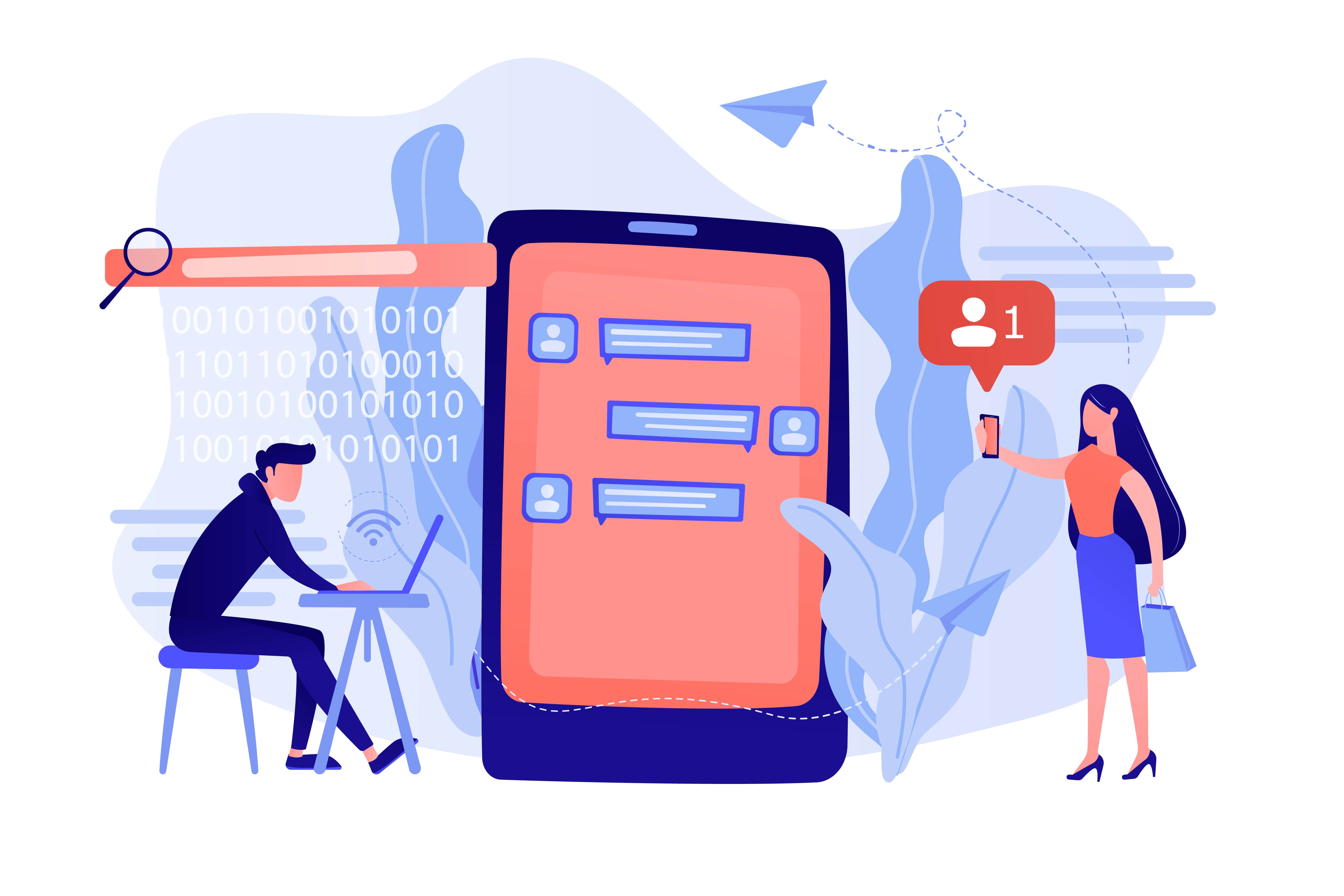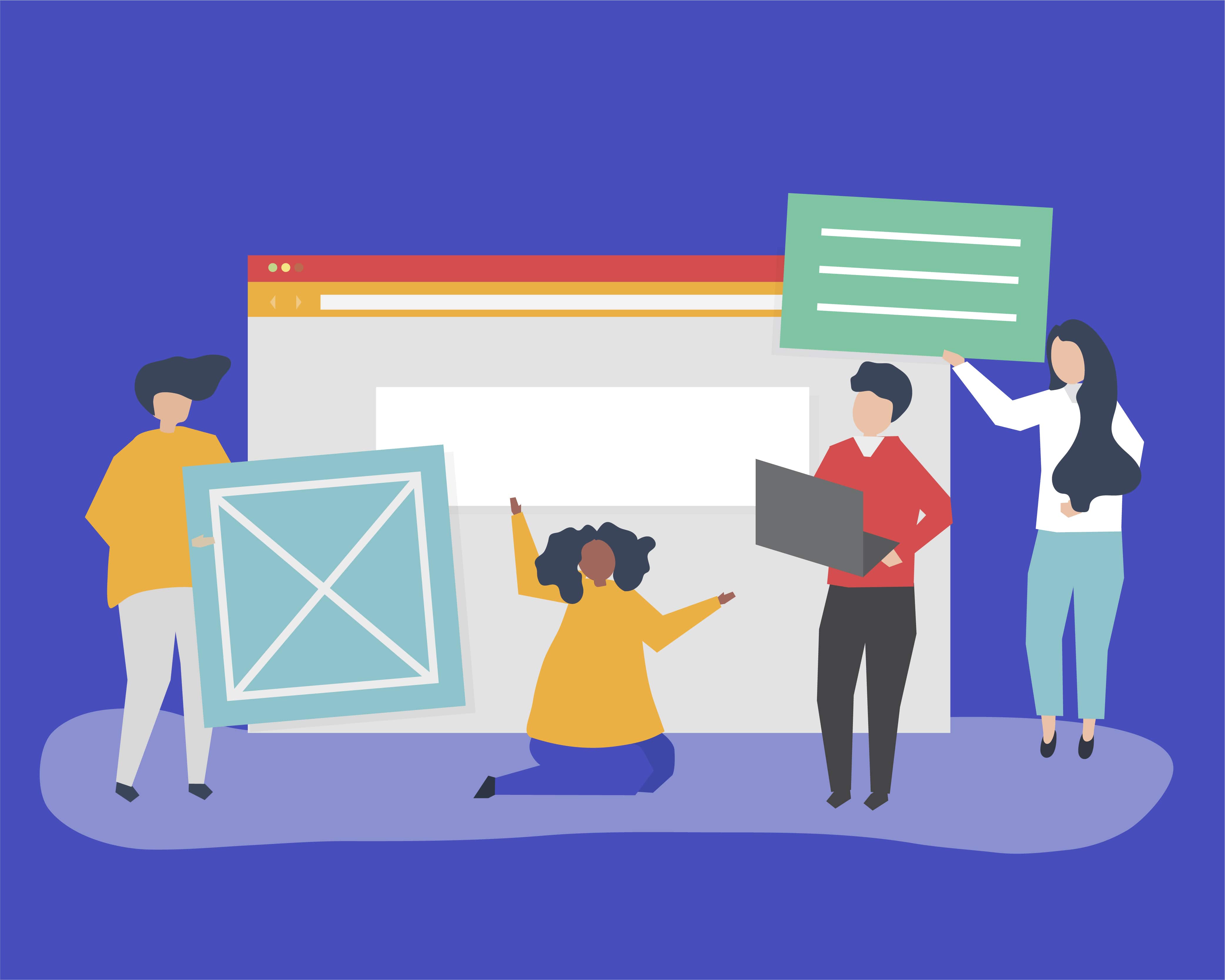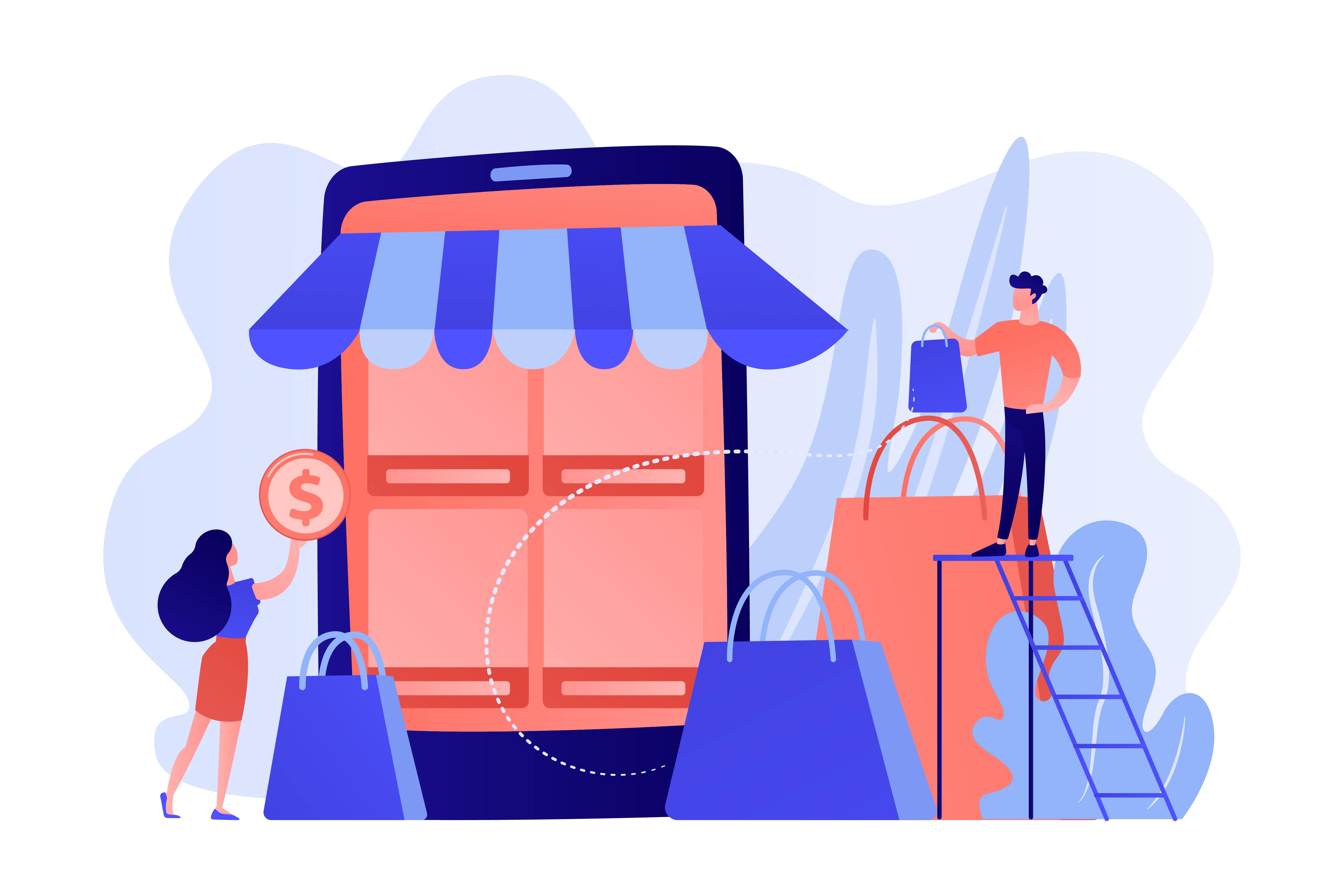Home

Challenges in app development
- Details
- By:
- Category: Articles
- Hits: 653
Navigating the Complexities of Mobile Apps Development: Challenges and Solutions
In the fast-paced world of technology, mobile apps development stands out as a field ripe with opportunities and fraught with challenges. As the global mobile app market is projected to generate over $935 billion in revenue by 2023, according to Statista, the stakes for creating successful applications have never been higher. This article delves into the intricate landscape of app development, exploring common hurdles and offering strategic solutions for developers and businesses alike.
The Cost Conundrum
One of the most significant barriers to entry in mobile apps development is the associated cost. A 2023 survey by Clutch revealed that the average cost of developing a feature-rich app ranges from $200,000 to $350,000, with complex enterprise applications potentially exceeding $500,000.
Solution: Embrace MVP (Minimum Viable Product) development. By focusing on core features initially, developers can reduce upfront costs and gather valuable user feedback. For instance, Dropbox started with a simple MVP video demonstration, which helped them secure funding for full-scale development.
Time: The Eternal Challenge
In the rapidly evolving tech landscape, time-to-market can make or break an app's success. The average time to develop a complex app ranges from 4 to 9 months, according to GoodFirms research.
Solution: Adopt agile development methodologies and leverage cross-platform development frameworks. Flutter, Google's UI toolkit, has gained popularity for its ability to cut development time by up to 50% for multi-platform apps. Airbnb, for example, successfully used React Native to speed up their mobile apps development process.
Standing Out in a Crowded Marketplace
With over 4 million apps available across major app stores, visibility is a significant challenge. In 2022, App Annie reported that the average smartphone user has about 80 apps installed but regularly uses only 9 apps per day.
Solution: Focus on App Store Optimization (ASO) and unique value proposition. Duolingo, the language learning app, grew to over 500 million downloads by gamifying language education and optimizing their app store presence with eye-catching visuals and compelling descriptions.
Ensuring Quality and User Satisfaction
In mobile apps development, quality is paramount. A study by Perfecto Mobile found that 88% of users will abandon apps due to bugs and glitches.
Solution: Implement rigorous testing protocols, including automated testing and beta testing programs. Spotify, for instance, uses a comprehensive testing strategy, including their "Bug Bounty" program, which rewards users for finding and reporting bugs.
The Update Imperative
Keeping apps relevant and functional requires regular updates. Apple's App Store and Google Play both favor apps that are frequently updated, influencing search rankings and visibility.
Solution: Plan for post-launch maintenance and updates from the outset. Allocate resources for regular feature enhancements and bug fixes. Instagram, for example, releases updates every two weeks, consistently introducing new features and improvements.
Crafting a Robust Project Definition Document
A well-structured Project Definition Document (PDD) is crucial for guiding the mobile apps development process. Here's what to include:
- Project Goals: Clearly define measurable objectives. For example, "Increase user engagement by 30% within six months of launch."
- Target Audience: Develop detailed user personas. Uber, for instance, targets both drivers and riders with distinct app features for each.
- Functionality: List core features and prioritize them. Trello's mobile app, for example, focused on essential project management features for its initial release.
- System Architecture: Specify the technology stack. Instagram initially chose to build separate native apps for iOS and Android to optimize performance.
- Budget and Timeline: Provide a detailed breakdown of costs and milestones. Airbnb's development team uses a quarterly roadmap to balance new feature development with maintenance.
Strategic Budget Planning
Effective budget planning is critical in mobile apps development. Here's a typical breakdown:
- Development: 50-60% of total budget
- Design: 10-15%
- Project Management: 10-15%
- Quality Assurance: 15-20%
- Marketing: 10-20% (often separate from development budget)
Industry Insight: According to a GoodFirms survey, companies that allocate at least 15% of their app development budget to marketing see a 24% higher success rate in terms of user acquisition and retention.
Conclusion: Embracing the Challenge
While mobile apps development presents numerous challenges, it also offers immense opportunities for innovation and growth. By understanding and preparing for these challenges, developers and businesses can navigate the complex landscape more effectively.
Success in this field requires a combination of technical expertise, strategic planning, and adaptability. As we've seen from examples like Dropbox, Airbnb, and Instagram, even the most successful apps faced and overcame significant hurdles during their development journeys.
For those embarking on mobile apps development projects, the key lies in thorough planning, agile execution, and a commitment to quality and user satisfaction. By embracing these principles and learning from industry leaders, developers can turn the challenges of app development into stepping stones for success in the dynamic world of mobile technology.

Building a sales app
- Details
- By:
- Category: Articles
- Hits: 580
Revolutionizing Sales: The Art and Science of Building Cutting-Edge Mobile Applications
In the dynamic world of sales, mobile apps development has emerged as a game-changing strategy for boosting productivity, efficiency, and success. With the global sales enablement platform market projected to reach $7.3 billion by 2028, according to Grand View Research, the imperative for businesses to invest in sophisticated sales applications has never been clearer. This comprehensive guide explores the key considerations, essential features, and best practices in developing a state-of-the-art sales application.
Understanding the Mobile-First Sales Force
The first step in creating a successful sales app is understanding the unique needs of modern salespeople. A 2023 study by Salesforce found that 60% of sales representatives increased their use of sales apps in the past year, highlighting the growing reliance on mobile technology in the field.
Best Practice: Conduct thorough user research, including ride-alongs with sales reps, to gain firsthand insights into their daily challenges and workflows.
Crafting an Intuitive User Experience
In the fast-paced world of sales, every second counts. A well-designed user interface can make the difference between a deal won or lost.
Key UX Considerations:
- One-handed operation for on-the-go use
- Offline functionality for areas with poor connectivity
- Quick-access features for frequently used tools
Case Study: When Coca-Cola overhauled its sales app with a focus on UX, they saw a 50% increase in app usage and a 20% boost in sales productivity.
Essential Features for Sales Powerhouses
Successful sales applications must provide a comprehensive set of features to meet the diverse needs of sales teams. In the realm of mobile apps development, this means integrating advanced functionalities seamlessly into a user-friendly interface.
Must-Have Features:
- Lead Management with AI-powered scoring
- Visual Pipeline Management
- Task Management with smart prioritization
- Real-time Analytics and Reporting
- Integrated Communication tools (email, calls, messaging)
Emerging Trend: Voice-activated features are gaining traction in sales apps. Salesforce's Einstein Voice Assistant, for example, allows reps to update records and create tasks using voice commands, increasing productivity by up to 30%.
Integration: The Key to Adoption
For a sales app to be truly useful, it must integrate seamlessly with existing systems and services. This is where the expertise in mobile apps development becomes crucial.
Critical Integrations:
- CRM systems (e.g., Salesforce, HubSpot)
- Email platforms (e.g., Outlook, Gmail)
- Document management systems (e.g., Dropbox, Google Drive)
- Communication tools (e.g., Slack, Microsoft Teams)
Industry Insight: According to a 2023 report by Gartner, sales organizations that integrated their mobile apps with at least three core business systems saw a 25% increase in sales productivity.
Security: Safeguarding Sales Gold
In the world of sales, data is king. Ensuring the security of sensitive customer information and sales figures is paramount in mobile apps development for sales teams.
Essential Security Measures:
- End-to-end encryption for all data transmissions
- Multi-factor authentication
- Remote wipe capabilities for lost or stolen devices
- Regular security audits and updates
Regulatory Compliance: With regulations like GDPR and CCPA in place, sales apps must be designed with data privacy in mind from the ground up.
The Project Specification: Blueprint for Success
A comprehensive project specification document is crucial for guiding the mobile apps development process. Here's what to include:
- Project Objectives: Clearly define what the app aims to achieve, e.g., "Increase sales conversion rates by 15% within six months of launch."
- Target Audience: Detailed personas of the sales reps who will use the app, including their tech-savviness and specific pain points.
- Functionality: A prioritized list of features and their detailed requirements.
- System Architecture: Technical specifications, including the chosen development framework (e.g., React Native for cross-platform development) and backend services.
- Budget and Timeline: A detailed breakdown of costs and a realistic project timeline, including milestones and deliverables.
Budgeting for Success
When it comes to mobile apps development for sales teams, budgeting accurately is crucial. Here's a breakdown of typical costs:
- Development Team: 50-60% of the total budget
- Infrastructure and Services: 15-20% (cloud hosting, third-party APIs)
- Marketing and User Acquisition: 10-15%
- Ongoing Maintenance and Updates: 10-15%
Industry Benchmark: According to a 2023 survey by Clutch, the average cost of developing a feature-rich enterprise sales app ranges from $100,000 to $500,000.
Market Leaders: Learning from the Best
Analyzing successful sales applications can provide valuable insights for your mobile apps development project:
- Salesforce Sales Cloud:
- Standout Feature: Einstein AI for predictive lead scoring
- Price: Starting at $25/user/month
- Success Metric: Used by 83% of Fortune 500 companies
- HubSpot Sales Hub:
- Standout Feature: Integrated email tracking and scheduling
- Price: Free plan available, up to $1,200/month for Enterprise
- Success Metric: Over 100,000 customers in 120 countries
- Pipedrive:
- Standout Feature: Visual sales pipeline management
- Price: Starting at $12.50/user/month
- Success Metric: 95% customer satisfaction rate
Conclusion: The Mobile Imperative in Sales
As the sales landscape continues to evolve, mobile applications have become indispensable tools for high-performing sales teams. Organizations that invest in sophisticated, user-friendly, and secure mobile apps for their sales force will be best positioned to thrive in an increasingly competitive market.
For developers venturing into sales-focused mobile apps development, the key to success lies in understanding the unique challenges of sales professionals, prioritizing user experience, ensuring robust security, and staying ahead of emerging technologies. By embracing these principles, we can create powerful tools that not only boost sales performance but also empower sales teams to excel in their crucial roles.
In the end, the future of sales is mobile, and the organizations that recognize and act on this reality today will be the market leaders of tomorrow.

Building an app for technicians
- Details
- By:
- Category: Articles
- Hits: 599
Revolutionizing Field Service: The Power of Mobile Apps for Technicians
In the age of digital transformation, the field service industry is experiencing a seismic shift, thanks to the advent of sophisticated mobile applications. As organizations strive to enhance efficiency and customer satisfaction, mobile apps development for technicians has emerged as a game-changing strategy. This article explores the myriad benefits of technician apps, key considerations in their development, and real-world success stories that underscore their transformative potential.
The Mobile Revolution in Field Service
The global field service management market, which includes mobile apps for technicians, is projected to reach $5.1 billion by 2025, growing at a CAGR of 16.2% from 2020, according to MarketsandMarkets. This explosive growth is fueled by the increasing adoption of mobile devices and the pressing need for real-time, on-the-go solutions in field service operations.
Benefits: Empowering Technicians, Delighting Customers
- Supercharged Efficiency Mobile apps for technicians are revolutionizing workflow management. For instance, ServiceMax, a leading field service management platform, reported that their mobile app helped customers reduce work order resolution time by up to 50%.
Key features driving efficiency include:
- Real-time scheduling and work order management
- GPS-enabled route optimization
- Digital inventory tracking and management
- Enhanced Customer Service In an era where customer experience is paramount, technician apps are bridging the communication gap between field workers and customers. A study by Aberdeen Group found that companies using mobile field service apps saw a 17% increase in customer satisfaction rates.
Innovative features include:
- Real-time job status updates for customers
- In-app communication channels
- Photo and video sharing capabilities for remote diagnostics
- Boosted Technician Satisfaction By providing technicians with powerful, user-friendly tools, organizations are seeing a marked improvement in employee satisfaction. A survey by Field Technologies Online revealed that 70% of technicians reported higher job satisfaction after the implementation of mobile field service apps.
Critical Considerations in Mobile Apps Development for Technicians
- User-Centric Design The success of technician apps hinges on their usability in the field. Developers must prioritize intuitive interfaces that can be navigated easily, even in challenging environments.
Best Practice: Conduct extensive field testing with actual technicians during the development phase. Salesforce's Field Service Lightning mobile app, for example, underwent rigorous testing with field technicians, resulting in a 35% reduction in training time for new users.
- Robust Security Measures With technicians handling sensitive customer and equipment data, security is paramount in mobile apps development for this sector.
Key Security Features:
- End-to-end encryption for data transmission
- Multi-factor authentication
- Remote wipe capabilities for lost or stolen devices
- Scalability and Customization As organizations grow and evolve, their technician apps must be able to scale and adapt.
Industry Trend: The rise of low-code and no-code platforms in mobile apps development is enabling faster customization and scaling of technician apps. Platforms like OutSystems have reported a 60% reduction in development time for field service apps using their low-code solution.
- Offline Functionality Given the nature of field work, technician apps must function seamlessly in areas with poor or no internet connectivity.
Case Study: ProntoForms, a mobile forms solution, implemented robust offline capabilities in their app, resulting in a 25% increase in field data accuracy and a 40% reduction in data entry time for their clients.
- Integration Capabilities For maximum efficiency, technician apps should integrate seamlessly with existing enterprise systems such as CRM, ERP, and inventory management platforms.
Success Story: When HVAC giant Carrier integrated their technician app with their SAP ERP system, they saw a 30% reduction in back-office processing time and a 20% increase in first-time fix rates.
Real-World Impact: The Air Conditioning Company Case Study
A prime example of the transformative power of technician apps comes from a leading air conditioning company that launched a custom mobile application for their field service team. The results were nothing short of remarkable:
- Response time to customer issues plummeted from 24 hours to just 6 hours
- Customer satisfaction rates soared from 70% to 85%
- Overall service costs were slashed by 20% due to improved efficiency
This case study underscores the potential of well-designed technician apps to drive significant improvements in operational efficiency and customer satisfaction.
The Future of Technician Apps: Emerging Trends
As we look to the future of mobile apps development for technicians, several exciting trends are emerging:
- AI and Machine Learning Integration AI-powered predictive maintenance and intelligent scheduling are set to revolutionize field service operations. Gartner predicts that by 2025, 50% of field service management deployments will include AI-driven scheduling optimization.
- Augmented Reality (AR) Features AR is poised to transform technician training and on-site support. Companies like Vuforia are leading the charge, with their AR platform enabling technicians to visualize complex equipment and receive real-time guidance.
- IoT Integration The Internet of Things (IoT) is enabling proactive maintenance by allowing technician apps to receive real-time data from connected devices. A report by McKinsey suggests that IoT-enabled predictive maintenance could reduce maintenance costs by up to 40%.
Conclusion: The Mobile Imperative in Field Service
As the field service industry continues to evolve, mobile apps for technicians are no longer a luxury—they're a necessity. Organizations that invest in sophisticated, user-friendly, and secure mobile applications for their field service teams will be best positioned to thrive in an increasingly competitive landscape.
For developers venturing into this space, the key to success lies in understanding the unique challenges of field work, prioritizing user experience, ensuring robust security, and staying ahead of emerging technologies. By embracing these principles in mobile apps development for technicians, we can create powerful tools that not only boost efficiency and customer satisfaction but also empower technicians to excel in their crucial roles.
In the end, the future of field service is mobile, and the organizations that recognize and act on this reality today will be the industry leaders of tomorrow.

Building an E-commerce App
- Details
- By:
- Category: Articles
- Hits: 583
E-commerce Apps: The Digital Storefront Revolution
In an era where smartphones have become extensions of our daily lives, the convergence of e-commerce and mobile apps development has created a new frontier for retail. With the global e-commerce market projected to reach a staggering $4.9 trillion by 2025, according to Statista, businesses are racing to provide seamless shopping experiences across all devices. This comprehensive guide explores the key factors and steps in building a successful e-commerce application, highlighting the crucial role of mobile apps development in this booming sector.
Understanding the Mobile-First Consumer
The first step in creating a successful e-commerce app is understanding the target audience's needs. In 2023, mobile devices accounted for 71% of retail website visits worldwide, emphasizing the importance of mobile-first design in e-commerce.
Best Practice: Conduct thorough market research using tools like Google Analytics and heat mapping software to understand user behavior on existing platforms. For instance, fashion retailer ASOS reported a 50% increase in conversions after optimizing their mobile app based on user behavior analysis.
Crafting the Perfect User Experience (UX)
In the competitive world of e-commerce apps, user experience can make or break success. A study by Amazon Web Services found that 88% of online shoppers wouldn't return to a website after a bad user experience, highlighting the critical nature of UX in mobile apps development for e-commerce.
Key UX Considerations:
- Intuitive navigation and search functionality
- Quick and easy checkout process
- Personalized product recommendations
- High-quality product images and descriptions
Case Study: The IKEA Place app, which uses augmented reality to allow users to visualize furniture in their homes, saw a 35% increase in sales conversions compared to their standard mobile app.
Essential Features for E-commerce Apps
Successful e-commerce applications must provide a comprehensive set of features to meet user expectations and drive sales. In the realm of mobile apps development, this means integrating advanced functionalities seamlessly into a user-friendly interface.
Must-Have Features:
- Advanced search and filtering options
- Secure payment gateways
- Push notifications for promotions and order updates
- Customer reviews and ratings
- Wishlist and save for later options
Emerging Trend: Voice search integration in e-commerce apps is on the rise, with 75% of U.S. households expected to own a smart speaker by 2025, according to Voicebot.ai.
Fortifying Security in E-commerce Apps
Security is paramount in e-commerce applications, where sensitive customer and payment data are handled. A 2023 report by IBM found that the average cost of a data breach in the retail sector was $3.28 million, underscoring the importance of robust security measures in mobile apps development for e-commerce.
Essential Security Measures:
- End-to-end encryption for all data transmissions
- Multi-factor authentication
- Compliance with PCI DSS for payment processing
- Regular security audits and updates
Industry Standard: Major e-commerce platforms like Shopify and Magento offer mobile SDK integrations that come with built-in security features, simplifying the process of creating secure e-commerce apps.
Scalability and Flexibility: Future-Proofing Your E-commerce App
In the fast-paced world of e-commerce, the ability to scale and adapt is crucial. Mobile apps development for e-commerce must consider future growth and changing market demands.
Best Practices for Scalability:
- Use cloud-based infrastructure for easy scaling
- Implement a microservices architecture for flexibility
- Design with internationalization in mind for global expansion
Success Story: Etsy's mobile app, built on a microservices architecture, handled a 42% increase in gross merchandise sales in 2020 without any significant performance issues.
Launching Your E-commerce App: A Strategic Approach
The launch of an e-commerce app is a critical phase that requires meticulous planning and execution. In the competitive landscape of mobile apps development, a well-executed launch can make the difference between success and obscurity.
Key Launch Steps:
- Rigorous Testing: Conduct thorough QA testing across various devices and scenarios. For example, Amazon's testing process involves over 60 million test cases per release.
- Soft Launch: Consider a phased rollout to gather real-world user feedback. Clothing retailer Zara used this approach, initially launching their app in select markets before a global release.
- Marketing Blitz: Leverage digital marketing channels to create buzz. Fashion Nova's aggressive social media marketing strategy led to their app being downloaded over 100,000 times in the first week of launch.
- Customer Support: Implement robust support systems to address user issues promptly. Zappos, known for exceptional customer service, extends this philosophy to their mobile app support, contributing to high user satisfaction rates.
The Future of E-commerce Apps
As we look to the future, several trends are shaping the next generation of e-commerce applications:
- AI and Machine Learning: Personalized shopping experiences powered by AI are becoming the norm. Pinterest's app uses AI to provide visual search capabilities, allowing users to find products by simply taking a photo.
- Augmented Reality (AR): AR features are enhancing the online shopping experience. Sephora's Virtual Artist app, which allows users to try on makeup virtually, has led to a 28% increase in conversions.
- Social Commerce Integration: E-commerce apps are increasingly integrating with social media platforms. Instagram's in-app checkout feature has revolutionized social commerce, with 130 million users tapping on shopping posts monthly.
- Sustainability Features: Apps are incorporating features to highlight eco-friendly products and practices. ThredUp's secondhand fashion app uses AI to categorize and price items, making sustainable shopping more accessible.
Conclusion: The Mobile E-commerce Imperative
In the digital age, a well-designed e-commerce app is no longer a luxury—it's a necessity. As mobile commerce continues to grow, businesses that invest in sophisticated, user-friendly, and secure mobile apps will be best positioned to capture market share and drive growth.
For developers and businesses alike, the key to success in e-commerce mobile apps development lies in understanding user needs, prioritizing security and user experience, and staying ahead of emerging technologies and trends. By following the guidelines and best practices outlined in this article, businesses can create e-commerce applications that not only meet current consumer expectations but are also poised to evolve with the changing digital landscape.
In the end, the future of retail is mobile, and the businesses that recognize and act on this reality today will be the market leaders of tomorrow.

 ES
ES  KO
KO  NL
NL  CS
CS  HR
HR  PT
PT  RO
RO  SV
SV  IT
IT  EL
EL  DE
DE  FR
FR  PL
PL  EN
EN